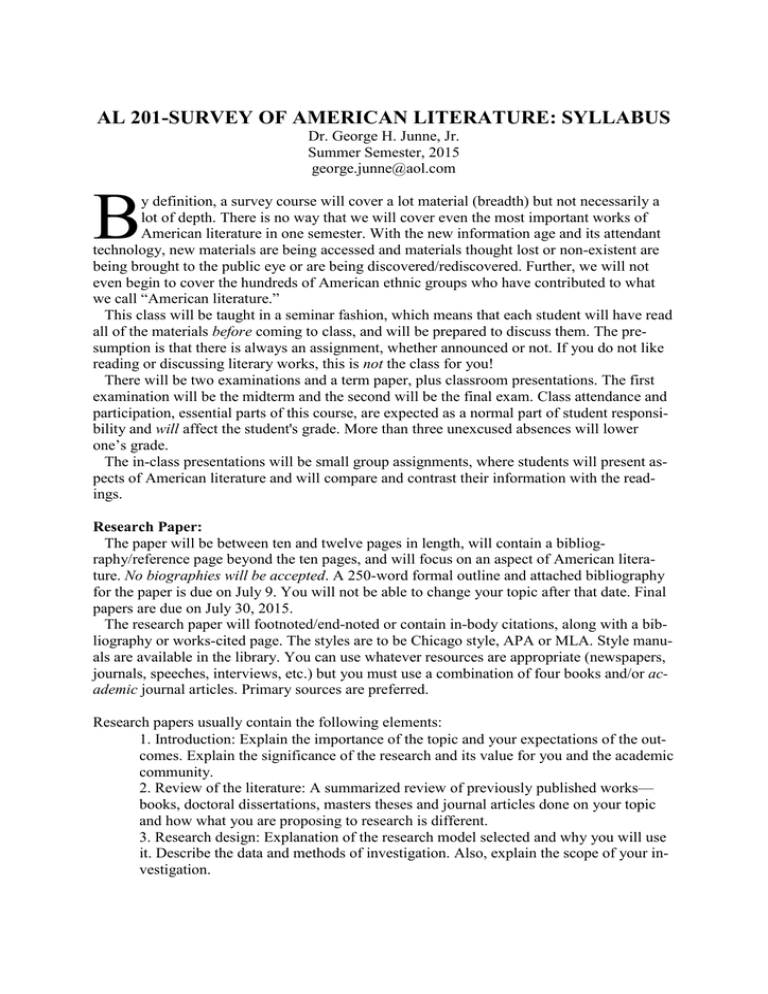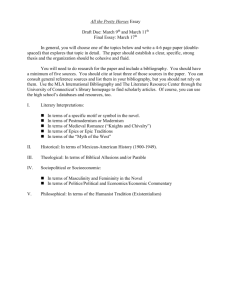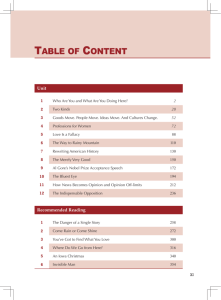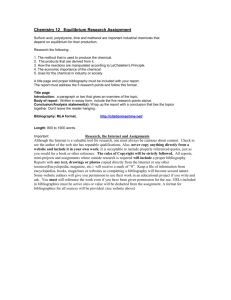AL 201-SURVEY OF AMERICAN LITERATURE: SYLLABUS
advertisement

AL 201-SURVEY OF AMERICAN LITERATURE: SYLLABUS Dr. George H. Junne, Jr. Summer Semester, 2015 george.junne@aol.com B y definition, a survey course will cover a lot material (breadth) but not necessarily a lot of depth. There is no way that we will cover even the most important works of American literature in one semester. With the new information age and its attendant technology, new materials are being accessed and materials thought lost or non-existent are being brought to the public eye or are being discovered/rediscovered. Further, we will not even begin to cover the hundreds of American ethnic groups who have contributed to what we call “American literature.” This class will be taught in a seminar fashion, which means that each student will have read all of the materials before coming to class, and will be prepared to discuss them. The presumption is that there is always an assignment, whether announced or not. If you do not like reading or discussing literary works, this is not the class for you! There will be two examinations and a term paper, plus classroom presentations. The first examination will be the midterm and the second will be the final exam. Class attendance and participation, essential parts of this course, are expected as a normal part of student responsibility and will affect the student's grade. More than three unexcused absences will lower one’s grade. The in-class presentations will be small group assignments, where students will present aspects of American literature and will compare and contrast their information with the readings. Research Paper: The paper will be between ten and twelve pages in length, will contain a bibliography/reference page beyond the ten pages, and will focus on an aspect of American literature. No biographies will be accepted. A 250-word formal outline and attached bibliography for the paper is due on July 9. You will not be able to change your topic after that date. Final papers are due on July 30, 2015. The research paper will footnoted/end-noted or contain in-body citations, along with a bibliography or works-cited page. The styles are to be Chicago style, APA or MLA. Style manuals are available in the library. You can use whatever resources are appropriate (newspapers, journals, speeches, interviews, etc.) but you must use a combination of four books and/or academic journal articles. Primary sources are preferred. Research papers usually contain the following elements: 1. Introduction: Explain the importance of the topic and your expectations of the outcomes. Explain the significance of the research and its value for you and the academic community. 2. Review of the literature: A summarized review of previously published works— books, doctoral dissertations, masters theses and journal articles done on your topic and how what you are proposing to research is different. 3. Research design: Explanation of the research model selected and why you will use it. Describe the data and methods of investigation. Also, explain the scope of your investigation. 4. Research: Main body of the paper that describes the research conducted. 5. Conclusions: Summation of significant sections of the research. 6. Bibliography/Reference Page: Materials used to support your research. Student Objectives-Students should be able to achieve the following: Expand your understanding of the nature of American literature as a “national literature” and its role in creating/maintaining “Americaness.” Understand the roles that gender, race, class, wealth, poverty, age and other factors played in developing and expanding American literature. Recognize and articulate some recurring literary and cultural themes in the readings. Be able to link literature to philosophies/belief systems. Demonstrate your ability to think critically about works of American literature, and to articulate those thoughts. Write focused essays on the various forms of American literature that include not only the texts but also the historical, cultural and other contexts that inspired them. Grading: Midterm Final Paper In Class Presentations Participation/Attendance 250-word feedback paper 20% 30% 25% 10% 10% 5% Plagiarism: Plagiarism is the theft of another person’s work and anyone caught plagiarizing will be reported to the university administration for disciplinary action. Essentially, anything that is not common knowledge must be cited! Paraphrasing and copying, even from any website, is plagiarizing if you do not cite the source. Appointments: If you need to meet with me, do not hesitate to make an appointment. Also, I will usually be available following class. The course pack is available at the library copy center. Three assigned novels are: The Scarlet Letter, The Great Gatsby and The Bluest Eye. Copies are on reserve in the library. Computers/Cell Phones: Because of the misuse of computers in the classroom with students surfing the Internet or reading e-mail, students will not use computers during class. Exceptions will be made with my permission. Cell phones must be turned off. Nor will there be any text messaging or other rude behaviors. AL 201 READING LIST Summer 2015 Dr. George H. Junne, Jr. The Literature of Colonial America: Christopher Columbus, from The Log of Christopher Columbus. Native American Voices, “Tales,” “Oratory,” and “Poetry.” The New England Primer. William Bradford, from Of Plymouth Plantation. Anne Bradstreet, “The Prologue,” “The Flesh and the Spirit,” “To My Dear and Loving Husband,” “A Letter to Her Husband,” and “The Author to Her Book.” John Winthrop, from The Journal of John Winthrop. Mary Rowlandson, from A Narrative of the Captivity and Restauration…. Jonathan Edwards, “Sarah Pierrepont” and “Sinners in the Hands of an Angry God.” The Literature of Reason and Revolution: Michel-Guillaume-Jean De Crevecoeur, “What is an American?” and “Manners of the Americans.” Benjamin Franklin, from The Autobiography. Thomas Paine, from “Common Sense” and “The American Crisis.” Phillis Wheatley, “To the University of Cambridge, in New England,” “On Being Brought from Africa to America,” “An Evening to the Evening,” “On Imagination,” and “To S. M. a Young African Painter, on Seeing His Works.” The Age of Romanticism: Washington Irving, “The Legend of Sleepy Hollow.” James Fenimore Cooper, from The Last of the Mohicans. Edgar Allen Poe, “The Raven,” “Annabel Lee,” and “The Purloined Letter.” Nathaniel Hawthorne, The Scarlet Letter. Ralph Waldo Emerson, “Self-Reliance.” Henry David Thoreau, “Civil Disobedience.” Frederick Douglass, from The Life and Times of Frederick Douglass. Emily Dickinson, various poems. The Age of Realism: Mark Twain, “The Notorious Jumping Frog of Calaveras County” and from Innocents Abroad. Ambrose Bierce, “An Occurrence at Owl Creek Bridge.” Kate Chopin, “Neg Créol.” The Modernist Era: Edwin Arlington Robinson, “Richard Cory,” “Cliff Klingenhagen,” “Miniver Cheevy,” “Eros Turannos,” and “Mr. Flood’s Party.” Marianne Moore, “To a Steam Roller,” “The Fish,” “Poetry,” “No Swan So Fine,” and “In Distrust of Merits.” Robert Frost, various poems. Shirley Jackson, “The Lottery.” The Postmodern Era. Eudora Welty, “Death of a Traveling Salesman.” James Baldwin, “Sonny’s Blues” and from Notes of a Native Son. Toni Morrison, The Bluest Eye. Amy Tan, from The Joy Luck Club. BOOKS: The Scarlet Letter by Nathaniel Hawthorne. The Great Gatsby by F. Scott Fitzgerald, The Bluest Eye by Toni Morrison.



